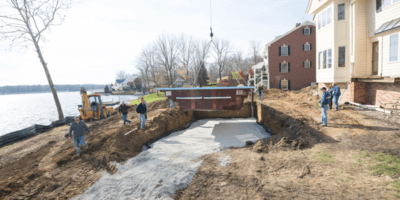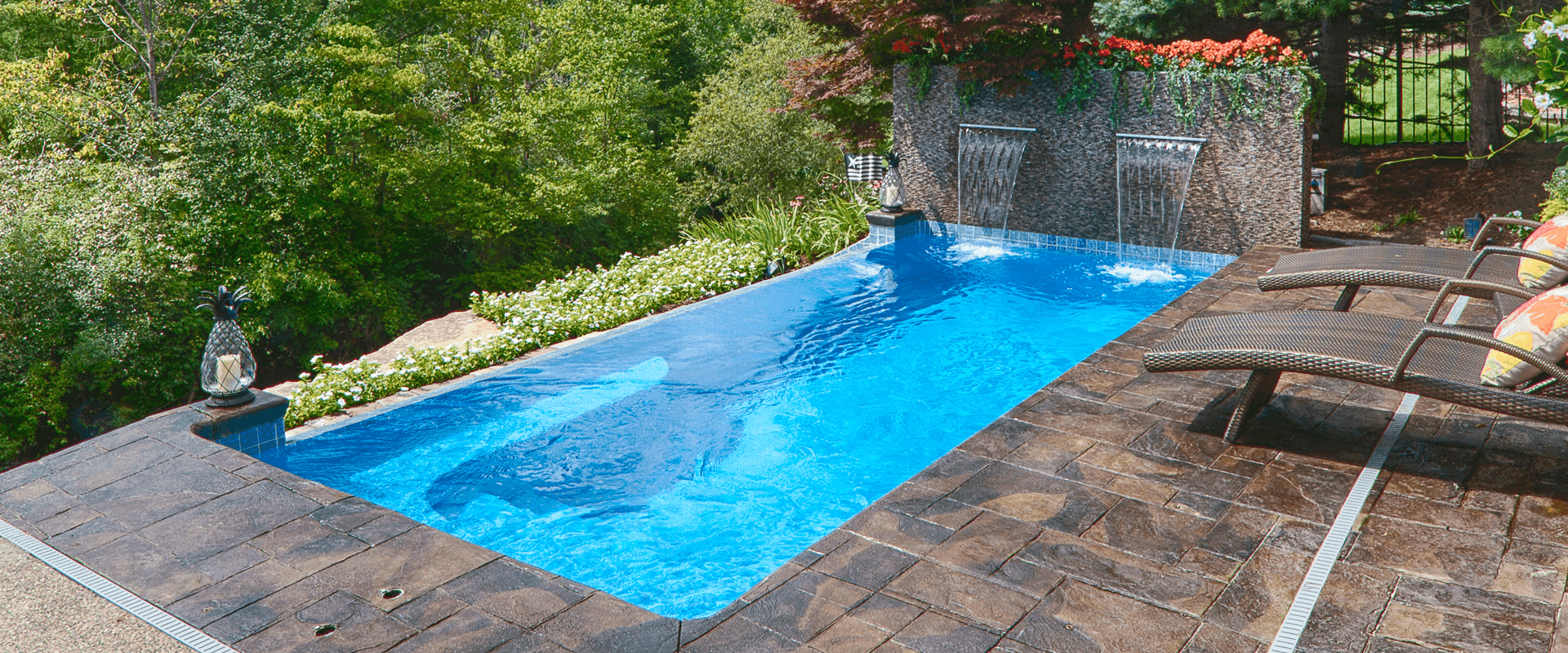877-929-7665
The Hidden Costs of Installing an Inground Pool
Installing an inground pool can transform your backyard into a personal oasis, offering a perfect relaxation, exercise, and entertainment spot. While upfront inground pool costs might seem manageable, there are numerous hidden costs that potential pool owners must consider. Understanding these hidden expenses for inground pools will help you make an informed decision and avoid unexpected financial burdens.
Initial Installation Costs

The initial installation is the most apparent cost. The process of installing an inground pool includes excavation, pool shell, plumbing, electrical work, and landscaping. The price varies significantly based on the pool type (concrete, vinyl, or fiberglass), size, and additional features like waterfalls or lighting. The installation can range from $25,000 to $120,000 on average, but this is just the beginning. Typically, vinyl inground pools are the cheapest way to build an inground pool when it comes to upfront installation costs. Fiberglass would follow next, and then concrete is typically the most expensive. It’s also important to note that these cost estimations are assuming the pool is installed by a professional pool builder. DIY inground pool costs may be less upfront, but if done incorrectly, it could cost you much more down the line to correct mistakes.
Excavation and Site Preparation: Before the pool installation, the builder must prepare the site. Site preparation involves excavation, which can be more complicated and expensive depending on your soil type, the presence of rocks, or any necessary grading. Unexpected obstacles during excavation can add a significant amount to the cost. Additionally, permits and inspections required by local authorities also add to the initial expenses.
Pool Shell and Materials: The choice of materials for your pool shell—concrete, vinyl, or fiberglass—impacts the overall cost. Each material has pros and cons, with concrete being the most durable, customizable, and expensive. Vinyl liners are the cheaper option in upfront expenses, but liners need replacement every 5-10 years on average. Fiberglass is a mid-range option in terms of cost and durability.
Maintenance Costs
Regardless of what material your pool is made of, regular maintenance is essential to keep it in good condition. Maintenance costs include chemical balancing, cleaning, equipment upkeep, and potential repairs. Required maintenance will also depend on your pool’s material. For example, concrete pools often require acid washing and replastering after a specific time, adding to your lifetime upkeep expenses.
Water Balance Treatments: Maintaining the correct chemical balance in your pool is essential for health and safety. The cost of chemicals such as chlorine, pH balancers, and algaecides can add up over time. Pool owners should expect to spend several hundred dollars annually on chemicals. Follow the recommended water chemistry levels per your pool’s manufacturer.
Cleaning and Repairs: Regular cleaning is necessary to keep your pool free of debris and algae. Whether you do it yourself or hire a pool service, maintaining an inground pool involves ongoing costs. Pool equipment such as pumps, filters, and vacuums also require maintenance and eventual replacement. Additionally, unexpected repairs due to equipment failure or structural issues can be costly.
Utility Costs: Pools consume a significant amount of water and electricity. Filling a pool the first time requires a large volume of water, and ongoing evaporation means you must top it off regularly. Refilling can be expensive, whether due to evaporation, leaks, or kids splashing. Water can be a significant cost, particularly in areas with high water prices or restrictions on water usage. The cost of running pool pumps, heaters, and lighting can significantly increase your utility bills, especially if you run them frequently. Pool heaters alone, particularly gas or electric models, consume a lot of energy. Efficient equipment and smart usage can help manage these costs, but they remain a substantial part of pool ownership. Electric use will likely cost you hundreds of dollars annually.
Winterization: In colder climates, pools require winterization to protect them from freezing temperatures. This process may involve draining the pool partially, adding antifreeze to the plumbing, and covering the pool securely. Please note: a fiberglass pool’s water level is NOT to be lowered for winterization, which could cause potential structural damage. Winterization and reopening in the spring come with labor and materials costs.
Insurance and Liability: Homeowners should consider the impact of an inground pool on their home insurance. Pools are often regarded as attractive nuisances and can increase liability risks. As a result, insurance premiums can rise significantly. Adding safety features such as fencing and pool alarms can mitigate some of these costs but are also an additional ongoing expense.
Other Considerations
Long-term Resale Value: While a pool can enhance your enjoyment of your home, its impact on resale value is mixed. In some markets, a pool can increase the appeal and value of a home, while in others, it can be a deterrent due to the associated maintenance costs and liability concerns. Potential homebuyers may also be wary of the hidden costs of owning a pool.
Legal and Regulatory Considerations: Local regulations may require specific safety measures such as fencing, alarms, or particular cover types. Ensuring compliance with these regulations may involve additional costs for installation and potential modifications. Be sure to discuss the local requirements for your pool with the pool builder who is installing it.
The Bottom Line of Inground Pool Costs
Inground pool installation comes with many costs you may not initially think about. Understanding these hidden costs allows you to make a more informed decision and enjoy your pool without unexpected expenses. When considering the lifetime ownership of a pool, a fiberglass pool is an excellent long-term investment. Try our fiberglass inground pool cost calculator for a ballpark estimate on a Thursday Pools fiberglass pool. If you are ready to get a detailed estimate, book a design consultation with an independent dealer in your area.
